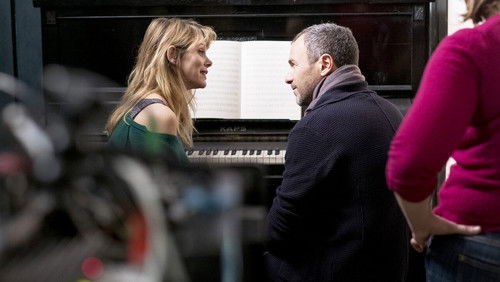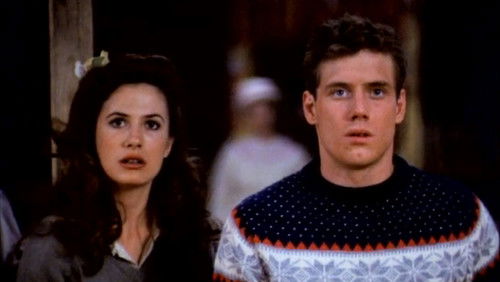Hoshi mamoru inu (2011)
49KHoshi mamoru inu: Directed by Tomoyuki Takimoto. With Toshiyuki Nishida, Tetsuji Tamayama, Umika Kawashima, Kimiko Yo. A middle-aged divorcee (Toshiyuki Nishida) embarks on a journey across Japan with his dog Happy. Along the way, they have to overcome health issues and financial difficulties.
“Based on a manga, Star Watching Dog despite its title, poster and trailer, is not quite your typical film with a story revolving around our canine friends, and because they are our best friends, there are countless of such films made, usually entrenched in saccharine sweet melodrama where the hallmarks of a dogu0026#39;s loyalty get put on display, until in recent years Hollywoodu0026#39;s movie magic decided to make them talk like humans, in films that you would be better off missing. Star Watching Dog goes back to basics, but in its eagerness to move away from formula, crafted a film centered around the human characters, who sadly isnu0026#39;t half as interesting as Happy, one of two dogs prominently featured in the movie.u003cbr/u003eu003cbr/u003eThere are two story arcs in this film, although one of them is little more than a sideshow distraction set up only to provide the picturesque looking sunflower filled field and to create an emotional hole in the heart of lead character Kyousuke Okutsu (Tetsuji Tamayama), a civil servant who grew up with a dog which he had carelessly mistreated, and to this day still bears the emotional scars of his cruel act. The main arc involves the discovery of an abandoned van in the middle of nowhere, and the skeletal remains of a man and his dog. This discovery landed on the lap of Kyousuke who is tasked to do the necessary since there are no identification papers found anywhere, except for a series of receipts, which Kyousuke gladly took up to track down the story of whoever it was, and was especially piqued by the dog, now buried in a nearby makeshift grave, which decided not to leave its masteru0026#39;s remains until its own demise.u003cbr/u003eu003cbr/u003eSo begins a road trip of sorts for Kyousuke as we journey together from point to point, starting with a spa hotel, to a provision shop, followed by an antique shop, on a ferry to the island of Hokkaido and finally to a beachfront hotel. Along the way Kyousuke picks up Yuki Kawamura (Umika Kawashima), a runaway who decided to come along for the ride. This makes the entire narrative very episodic in nature, with each pitstop contributing to the backstory of the main arc involving the unidentified man (Toshiyuki Nishida) and his Akita dog Happy (the Akita you will know since itu0026#39;s a breed made famous by Hachiko) told in flashbacks, which involves very little of the usual dog antics and tricks used by filmmakers to pad their films, but focused a lot more on Toshiyuki Nishidau0026#39;s elderly man character instead, with the man being obviously sick, and running out of cash, plodding to its inevitable end.u003cbr/u003eu003cbr/u003eBut hereu0026#39;s where the filmmakers took out their cheat sheet after they have exhausted a lot of scenes with the very obvious message that kids donu0026#39;t make good pet owners, as they are in it for a pet so long as the latter stays cute, and will outlive their welcome once the animals grow up, since they will be other distractions in life while growing up. We donu0026#39;t necessarily learn a lot about the elderly man and his dog Happy during the flashbacks, and neither does the characters of Kyousuke and Yuki serve any further function once their quest brings them full circle to where they had started, so the filmmakers had to pad the film with an extended epilogue that explained and showed, from the very beginning, with the elderly manu0026#39;s relationship with Happy, going through a series of milestone events from the Lehmann Brothers debacle, and the breaking up of the manu0026#39;s family through his own indifference, making him one really sad soul with nobody to turn to except for his dog as they go on a one-way trip with a medical sentence in tow, with no money, no friends and no family but each other.u003cbr/u003eu003cbr/u003eThis is the segment that makes it your typical canine film and frankly was a lot more interesting than everything else that went by earlier, since they were little more than teases for the real thing, as we learn just why and what this dog did what it did, although it can be said that this epilogue section was anything but canonical since nobody can actually verify what was said and done, if the narrative technique following Kyousuke was used. So I thought this was entirely necessary, otherwise the entire film would have felt really empty. Thereu0026#39;s little character development in the story since the characters are all on their respective road trips in different timelines with little time devoted to allow audiences to learn more of their characters behind whatu0026#39;s being played out on screen.u003cbr/u003eu003cbr/u003eLike the dolphin blessed with a happy looking face, Happy the Akita dog also possesses similar features that will appeal to just about any kid in the theatre to want to get one, but I really hope its message will sink into parents not to succumb to impulse and then having a go at abandoning a being that has nothing but absolute loyalty for you. As far as films about canines go, this one settles in just about average, saved very much by the last, unfortunately draggy, 30 minutes.”









